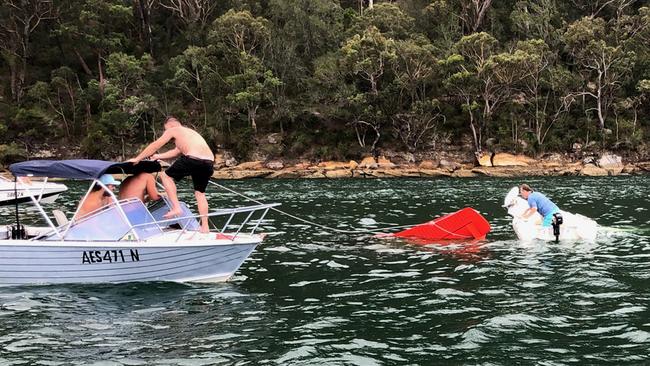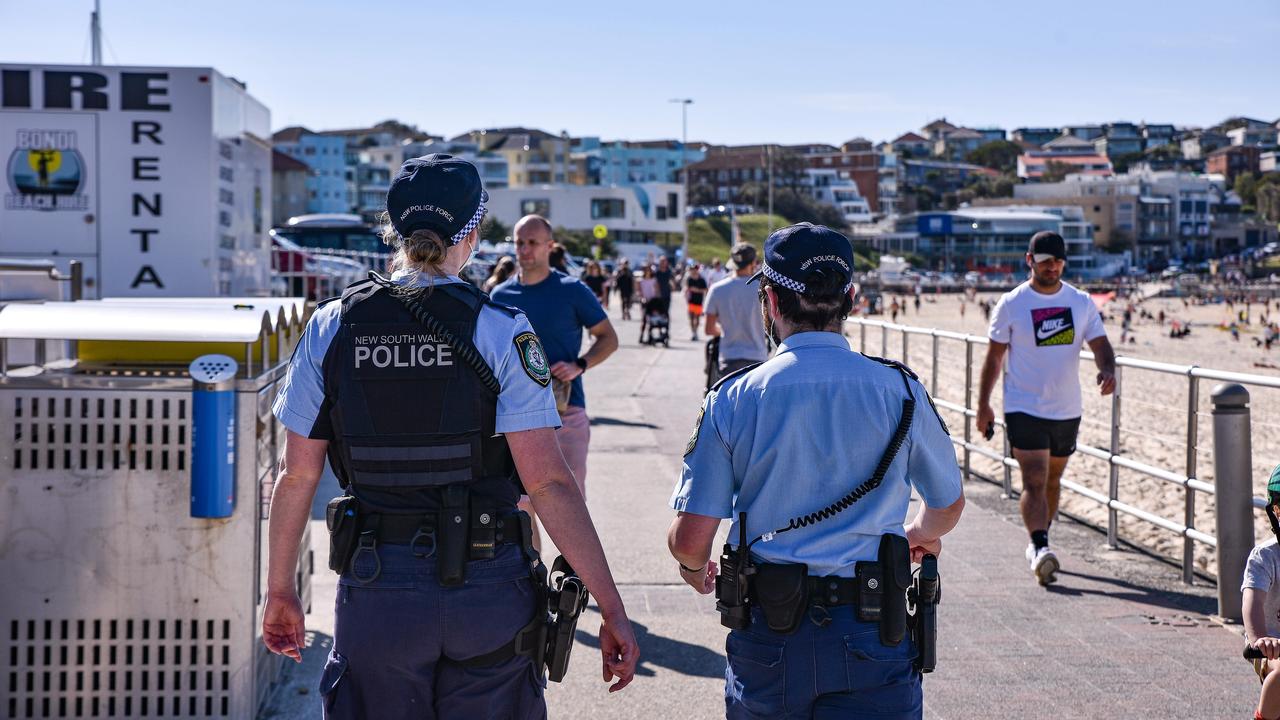‘It was sinking too fast’: mates’ desperate bid to save seaplane plunge family
Four mates have told of their desperate attempts to save the six people trapped in a seaplane as it sank into a river.

Four mates have told of their desperate attempts to save the six people trapped in a seaplane as it sank into the Hawkesbury River in Sydney’s north on New Year’s Eve, describing their frantic efforts to keep the plane afloat.
Todd Sellars and three friends had been staying in a houseboat on the Hawkesbury for a few nights when they heard the loud thrum of a seaplane flying low above them on Sunday afternoon.
Mr Sellars, a 32-year-old sheet metal fabricator from the NSW central coast, looked up just in time to see the aircraft flip and crash into the water 150m away.
“I was on the top deck of the boat and the plane was flying low and really loud so I put my head around the corner and saw it just flip and nosedive straight into the water,” Mr Sellars told The Australian yesterday.
Mr Sellars and his friend Will McGovern jumped into a dinghy and sped to the crash site where the aircraft was upside down and sinking rapidly.
“We tried to dive down three or four times, grabbing at the windows and door to try and open something, but the plane was too long and sinking too fast for us to do anything,” Mr Sellars said.
There were no signs of life inside the cabin and his vision was severely blurred by oil seeping fast from the plane’s fuel tank.
“I tried to stay underwater longer but I couldn’t slow my heart rate because of all the adrenaline,” Mr Sellars said.
The group tied their anchor rope around a part of the plane wing still protruding from the water in an attempt to drag the aircraft towards the shore and shallower water.
The plane was too heavy for Mr Sellars’ small boat, and so they tied off the rope on a bollard and left a marker so authorities would know where the aircraft was submerged.
“It all happened so fast, I think it was just five minutes before the plane was entirely underwater,” Mr Sellars said.
The group was shaken by what it witnessed but proud of its rescue efforts.
“I did have a bit of a tear about it, but I know we did our best to help,” Mr Sellars said.
Six people died in the crash, including Canadian-Australian pilot Gareth Morgan, millionaire British chief executive Richard Cousins, his sons William, 25, and Edward, 23, his fiancee Emma Bowden, the art editor of OK Magazine, and her 11-year-old daughter Heather Bowden Page.
Tributes flowed for Mr Morgan and the Cousins family, who had been visiting Australia for a festive getaway to relax and watch the Ashes.
Former English cricket captain Michael Vaughan and the Barmy Army paid tribute to Mr Cousins, who was a mad cricket fan.
William Cousins worked as the head of press for pro-European Union group Open Britain and was remembered as an “extraordinary young man” who would be “missed beyond words”.
His brother Edward had just graduated with a history degree from Scotland’s St Andrew’s University and a spokesman told The Australian he had “a bright future ahead of him”.
Australia’s crash investigator confirmed it would probe the sharp right-hand turn which occurred just seconds before the seaplane plunged into the river.
The plane, a 1964 model de Havilland Beaver, took off from Cottage Point Inn just after 3pm on Sunday, turning towards the northwest before making a sudden sharp turn to the right and nosediving into the water at Jerusalem Bay.
Australian Transport Safety Bureau executive director of transport safety Nat Nagy appealed for video footage of the crash from potential witnesses.
The investigation would examine the aircraft’s maintenance records, communication with operator Sydney Seaplanes and the pilot’s background and experience.
Scrutiny will be placed on avionics and aircraft components and the history and age of the aircraft model.
“We’ll try to get the recorded data to see exactly what the aircraft was doing at the time, whether the engine was operating at full power and whether the aircraft was climbing or descending at the time,” Mr Nagy said.
He said the bureau was hopeful mobile phones, laptops or go-pros submerged with the wreckage may have recorded the final moments of the flight.
Investigators intend to bring the plane to the surface by the end of this week, stressing the importance of keeping the wreckage intact. A preliminary factual report is expected to be issued within 30 days.
Sydney Seaplanes said they were co-operating fully with the ATSB investigation.



